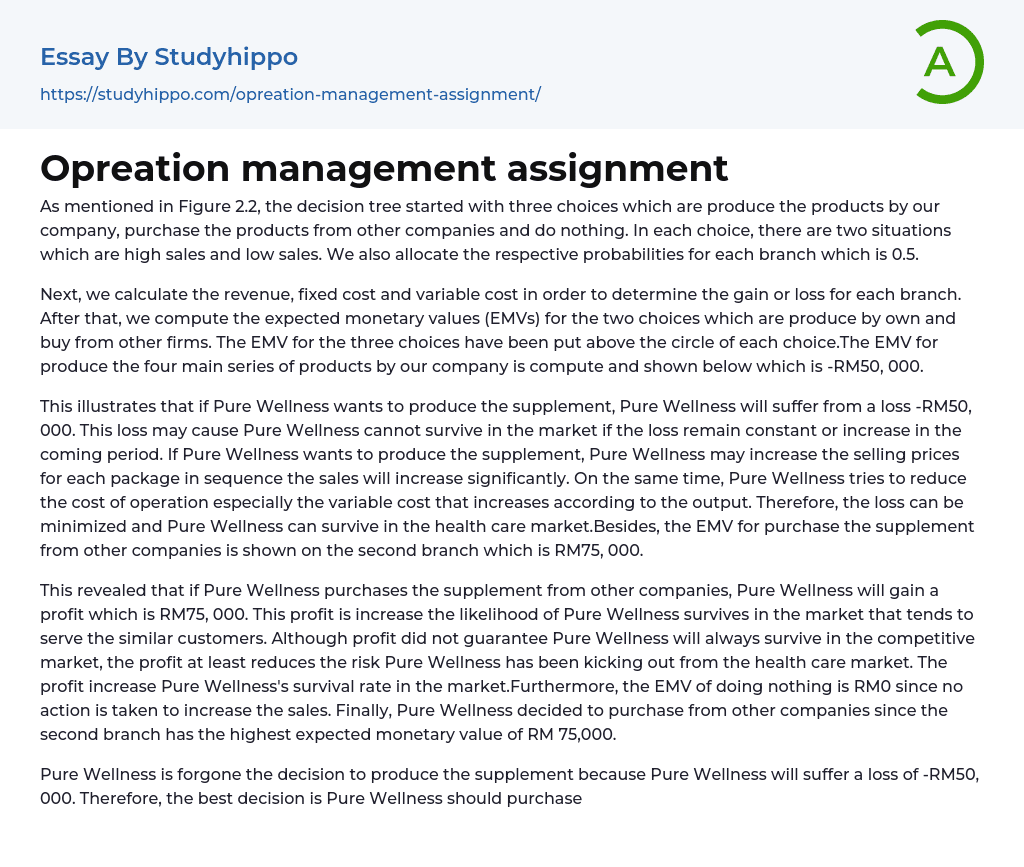Figure 2.2 demonstrates that the decision tree consisted of three options: creating our company's products, acquiring products from other companies, or taking no action. Within each option, there were two outcomes: high sales or low sales. Additionally, a probability of 0.5 was assigned to each branch.
Firstly, we perform calculations on revenue, fixed cost, and variable cost for every branch to determine the profit or loss. Next, we proceed with computing the expected monetary values (EMVs) for two options, i.e., producing on our own or purchasing from external organizations. The respective EMVs for every option have been displayed above their respective circles. The EMV for producing the four primary product series in-house is computed and shown below as -RM50,000.
According to the information provided, Pure Wellness may incur a loss of RM50,000 if they proceed with producing
...the supplement. This loss could potentially harm Pure Wellness's survival in the market, especially if it remains consistent or increases in the future. To offset the potential loss, they could increase the selling prices and reduce variable costs associated with production. This approach may minimize the loss and enable Pure Wellness to thrive in the healthcare market. Additionally, the EMV for purchasing the supplement from other companies is RM75,000, as indicated in the second branch.
By purchasing supplements from other companies, Pure Wellness would earn a profit of RM75,000, which would increase the chances of its survival in a competitive market that caters to similar customers. While profit cannot guarantee the company's survival in the market, it can help reduce the risk of being expelled from the healthcare market. The profit would boost Pure Wellness's survival rate in the market. In
addition, doing nothing has an expected monetary value of RM0 since no action is taken to increase sales. Ultimately, Pure Wellness decided to purchase from other companies due to the second branch having the highest expected monetary value of RM75,000.
Pure Wellness has decided not to produce the supplement due to a potential loss of -RM50,000. Instead, the best course of action is to purchase the four main series of products from other companies in order to survive and earn a profit in the market. Our company, Pure Wellness Sdn. Bhd., utilizes forecasting techniques that involve collecting data and using mathematical models to make predictions about sales. With this information, our management team can make informed decisions based on the forecasted results.
The forecast is crucial for Pure Wellness Sdn. Bhd.'s decision making process. This includes forecasting sales for four main product series: blood type, functional, beauty, and slimming. The company will use this information to make appropriate arrangements aimed at boosting sales.
Our companies will provide four product categories, making it crucial to create precise sales predictions. We have opted for a medium-range forecast spanning 3 months to 3 years, to estimate sales and plan accordingly. Alternatively, we use a long-range forecast that extends beyond three years for product research and development.
There are five quantitative models that will be used to forecast demand and sales in Malaysia. The chosen time-series models are moving averages and exponential smoothing. In addition, linear regression under the associative model will also be utilized for forecasting. The necessary data will be collected through consumer surveys and historical company data before making any forecasts.
Once the forecast is created, it is crucial
to verify and execute the outcome. It is necessary to confirm the validity of the model, assumptions, and data used in the forecast. While it may not always be precise, forecasting is essential for businesses to anticipate future occurrences and make critical decisions in the present.
- Finance essays
- International Business essays
- Macroeconomics essays
- Barriers To Entry essays
- Microeconomics essays
- Pricing essays
- Profit essays
- Consumerism essays
- Export essays
- Free Trade essays
- International Trade essays
- Compensation essays
- Monopoly essays
- Trade essays
- Industry essays
- Warehouse essays
- Economic Development essays
- Economic Growth essays
- Inflation essays
- Taxation essays
- Central Bank essays
- Monetary Policy essays
- Economy essays
- Gross Domestic Product essays
- Recession essays
- Capitalism essays
- Economic System essays
- Materialism essays
- World economy essays
- American Dream essays
- resources essays
- Max Weber essays
- Employment essays
- Minimum Wage essays
- Unemployment essays
- Human Development essays
- Income Inequality essays
- Economic Inequality essays
- Money essays
- Financial Accounting essays
- Market Segmentation essays
- Supply And Demand essays
- Purchasing essays
- Forecasting essays
- Legacy essays
- Bank essays
- Corporate Finance essays
- Financial News essays
- Financial Ratios essays
- Financial Services essays




